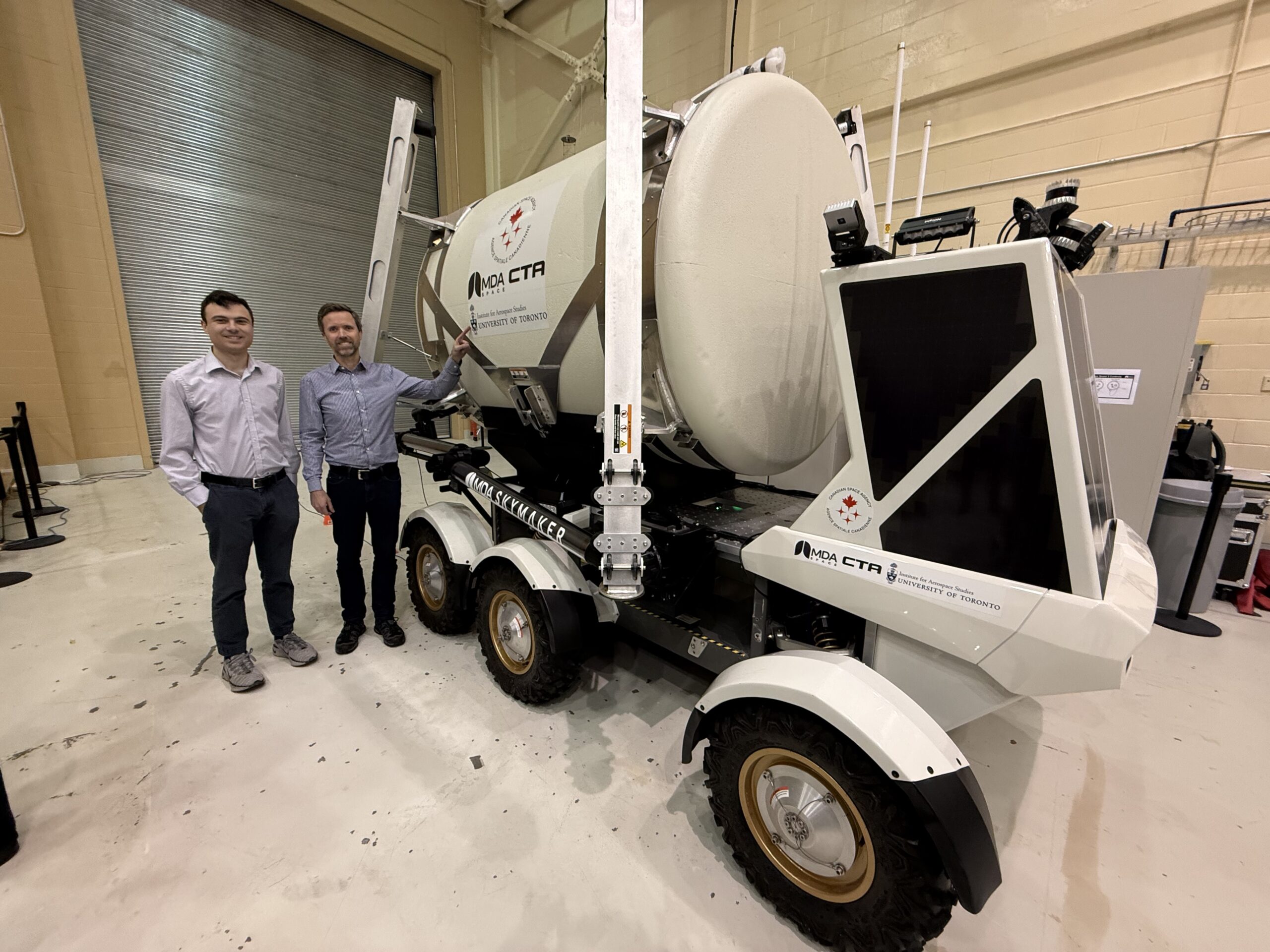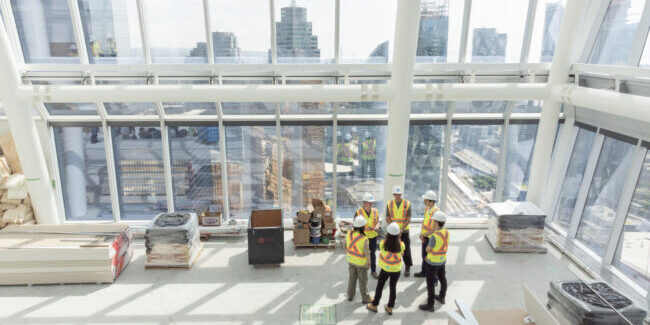Autonomy algorithms developed by the University of Toronto Institute for Aerospace Studies (UTIAS) researchers could one day make cargo transport on the moon safer and more efficient for astronauts.
As part of a team led by MDA Space, Professor Tim Barfoot (UTIAS) and Alec Krawciw (UTIAS PhD student) are developing technology that will help Canada’s proposed Lunar Utility Vehicle (LUV) navigate between cargo drop-off points during future lunar missions — addressing a key transportation challenge once astronauts land on the moon.
“Lunar exploration involves a landing site and a habitat site about five kilometres apart,” says Barfoot, who is also director of the University of Toronto Robotics Institute.
“The landing site is flat for safe shuttle arrival, while the habitat needs to be shielded from radiation, typically behind rocky terrain. This creates a transportation challenge: astronauts must be able to move all cargo from the shuttle to the habitat.”
Unlike previous planetary missions where rovers explore terrain in multiple directions to collect data, the LUV will make regular round trips between fixed locations to deliver goods and equipment to astronauts. This marks the first time a space rover will be required to repeat the same path, making Barfoot’s visual teach-and-repeat (VT&R) navigation framework well-suited for the mission.
“Teach-and-repeat algorithms allow us to pilot the rover along a predetermined path by manually or physically driving it, and once it learns the path, it can automatically repeat the route as many times as you like,” says Barfoot.
“By automating this part of the mission, it saves astronauts time and energy returning to the landing site to pick up cargo, limits astronaut exposure to lunar elements and increases mission productivity.”
As part of his PhD research, Krawciw is adapting the self-driving technology for integration with the Canadian Space Agency’s (CSA) LUV test vehicle, the Lunar Exploration Light Rover (LELR).
In December 2024, Krawciw and Barfoot joined teams from MDA Space and the Centre de Technologies Avancées BRP at the University of Sherbrooke, at the CSA’s analogue terrain in Montreal, Quebec to trial the autonomy on the LELR.
The field test provided an opportunity for the teams to identify and address any hardware and software constraints when the vehicle is operating in lunar-like conditions.
“Adapting our code to the LELR came with some unexpected challenges,” says Krawciw.
“Simulating lunar conditions introduced a five-second delay in command and feedback, so we couldn’t rely on joystick control like we normally would. That pushed us to develop a new semi-autonomous teaching method using short path segments — something we hadn’t done before.”
“Despite the technical challenges, it’s always exciting to see something I worked on in the lab come to life in a real space-focused mission.”
After a successful field trial, the team was selected by the CSA in July 2025 to conduct an early-phase study for Canada’s proposed LUV as part of the CSA’s Lunar Surface Exploration Initiative. This will be the country’s next contribution to NASA’s Artemis program, which aims to establish a sustainable human presence on the moon.
As the team prepares the vehicle to be mission-ready, Krawciw is focused on enhancing the system’s readiness in long-duration deployments and improving its performance in real-world conditions.
“We learned a lot from running the system continuously in the field,” says Krawciw.
“It wasn’t just about getting the autonomy to work — it was about making it reliable and user-friendly for operators who might be using it all day, in tough conditions. That perspective is shaping how I approach the next phase of development.”





